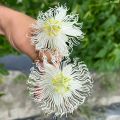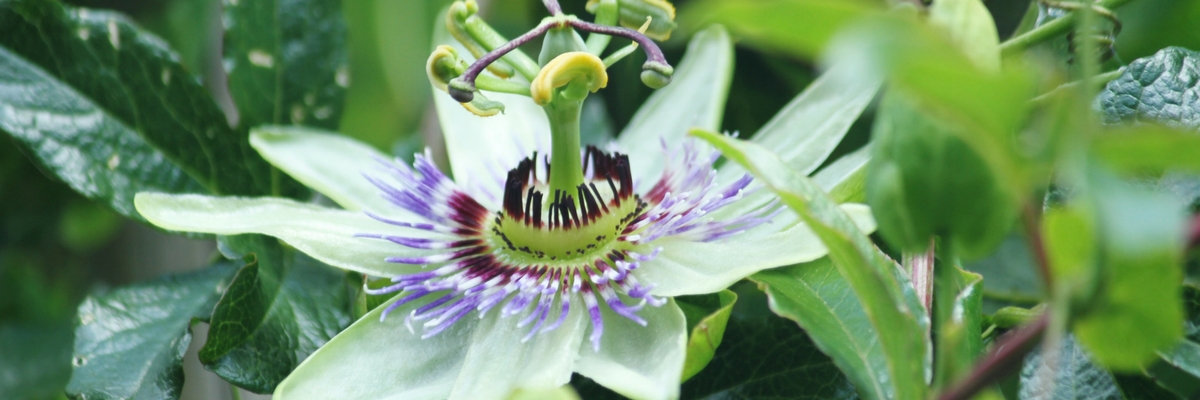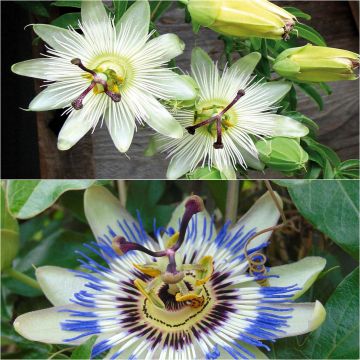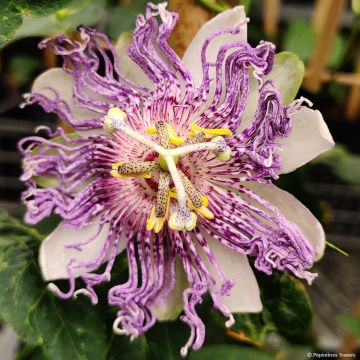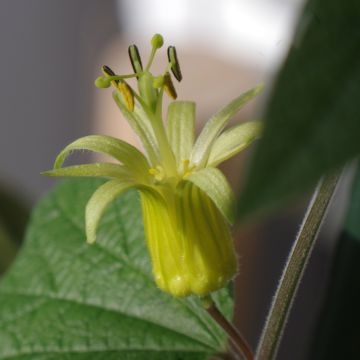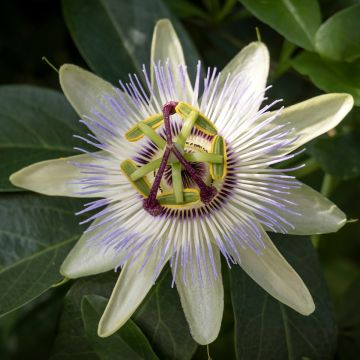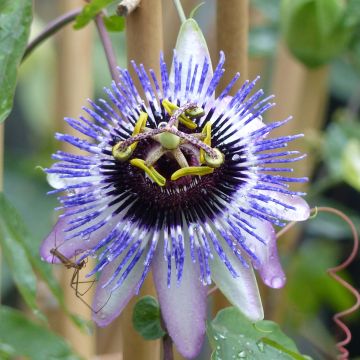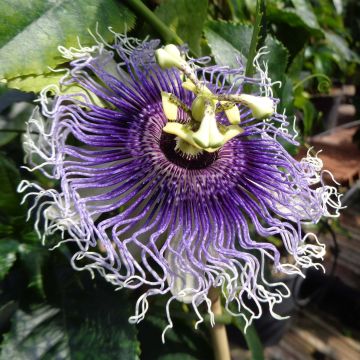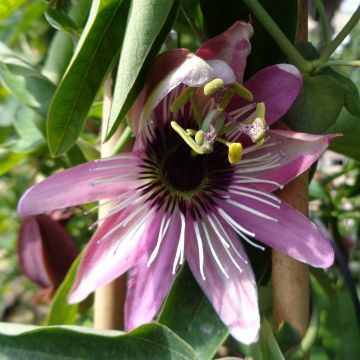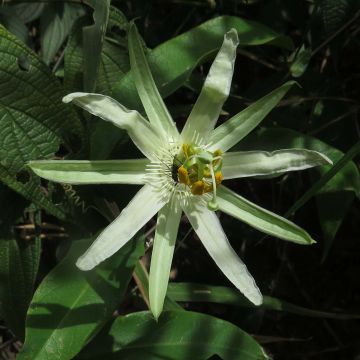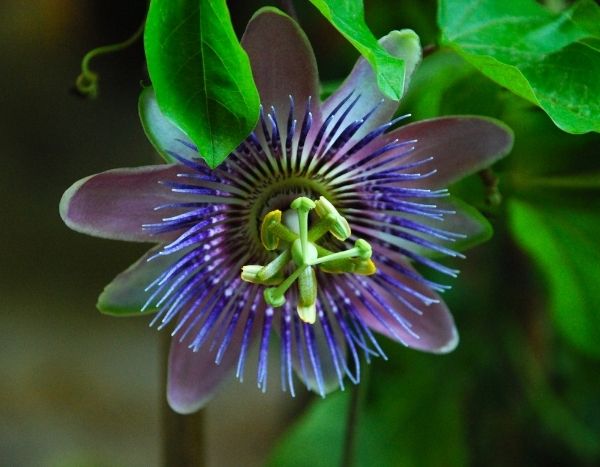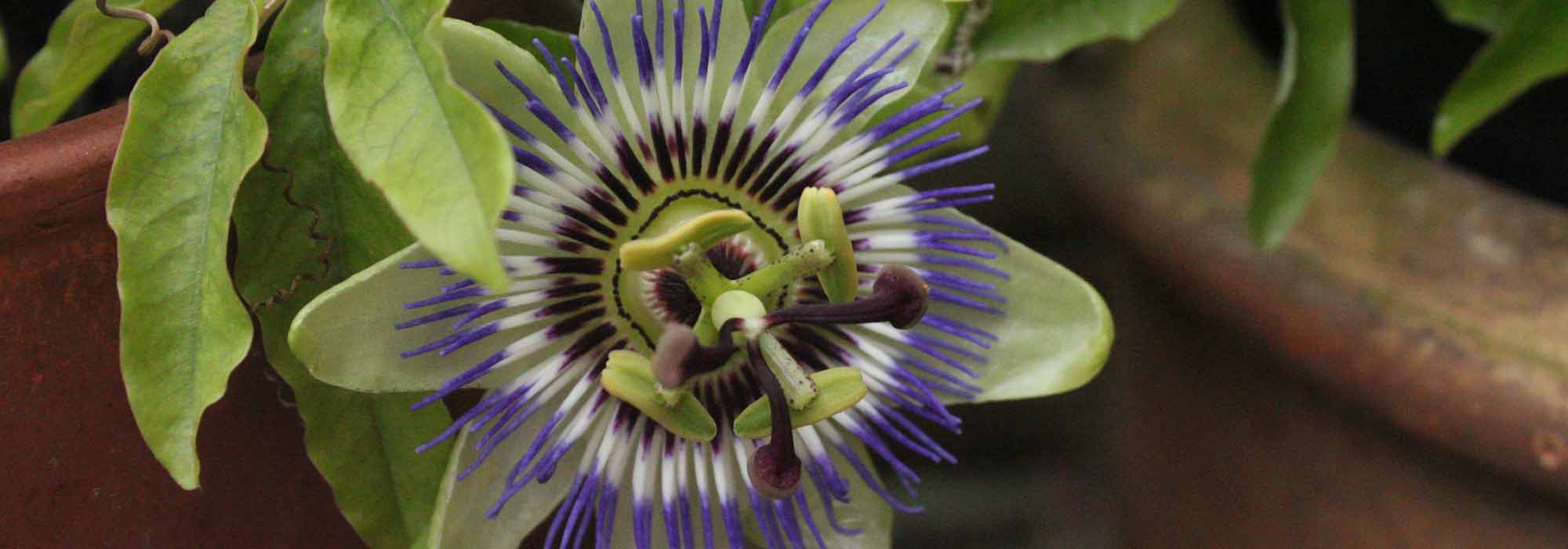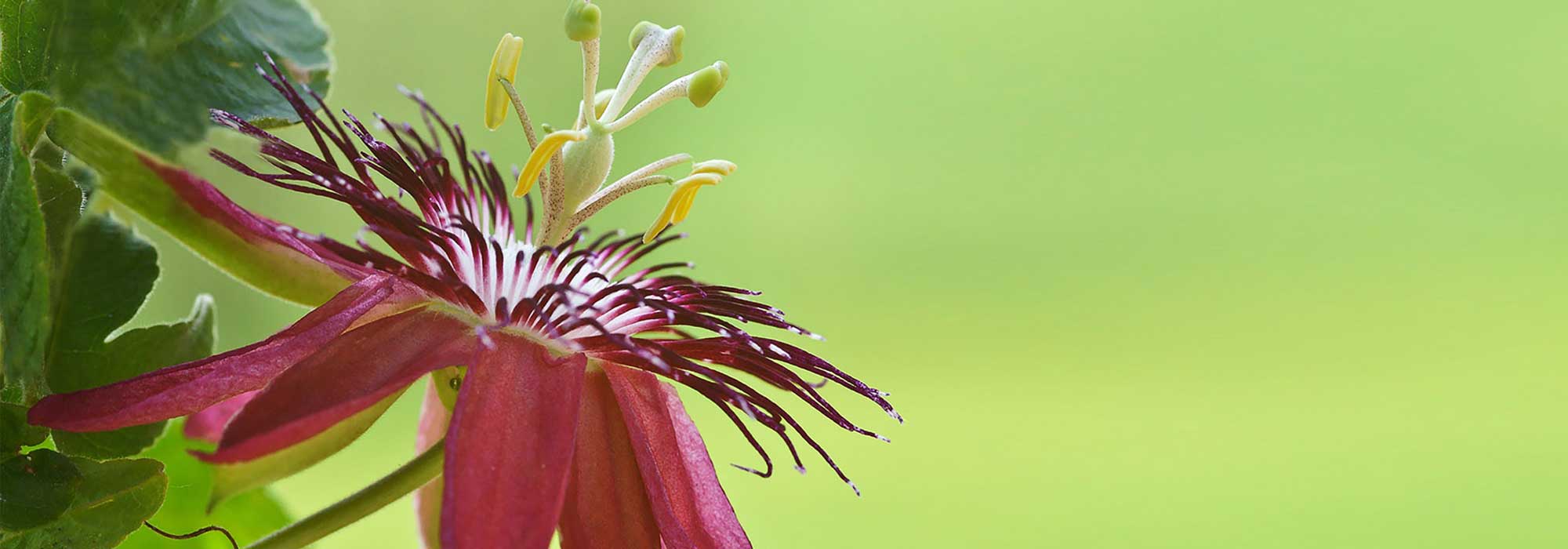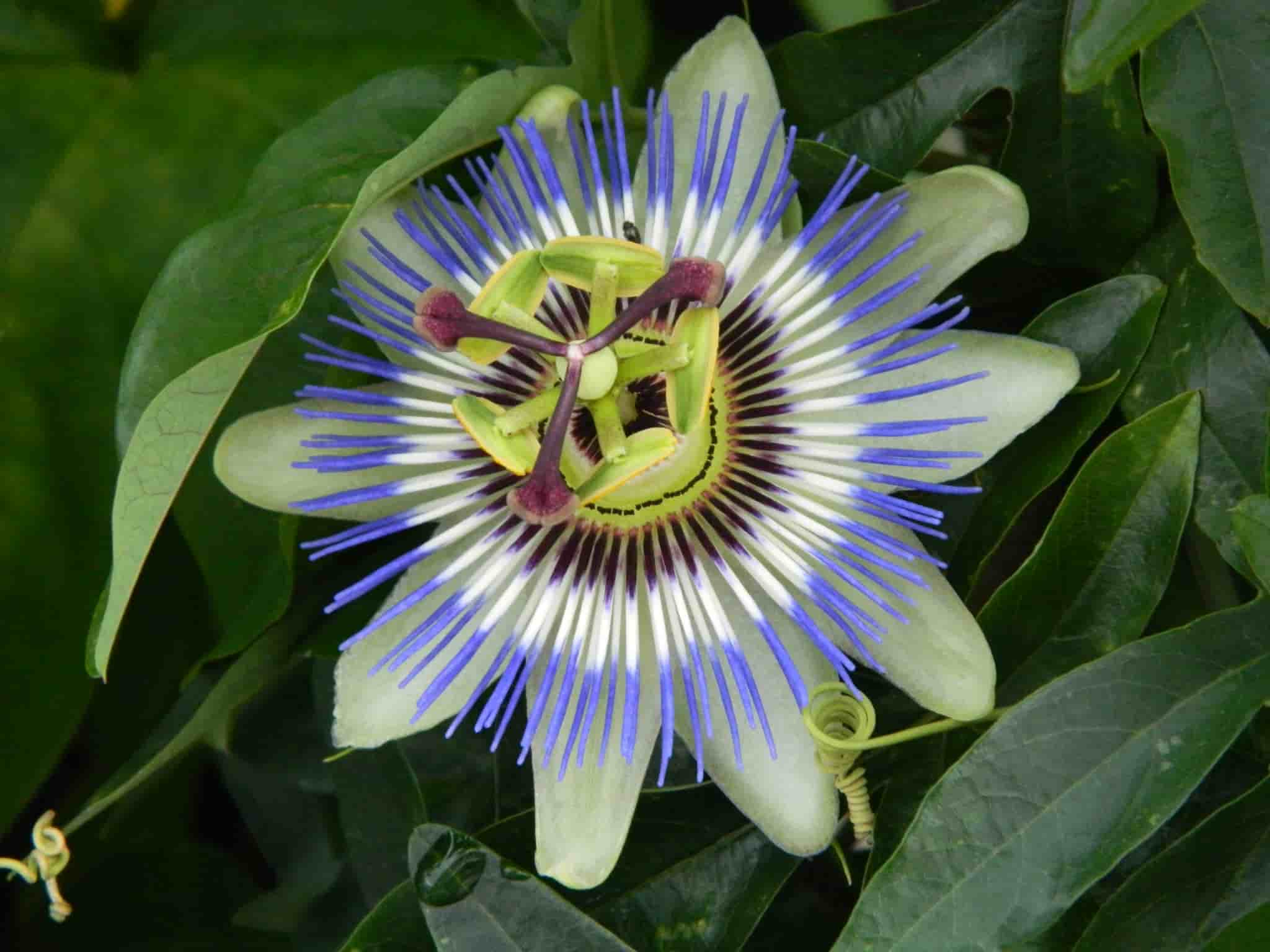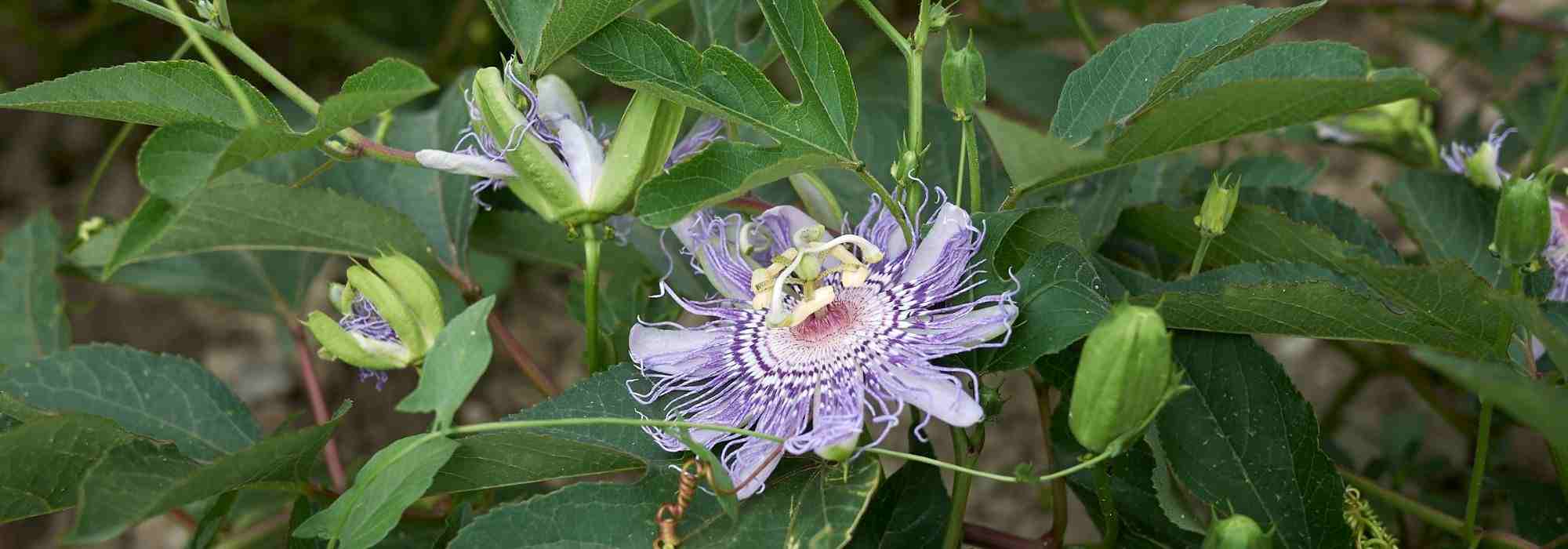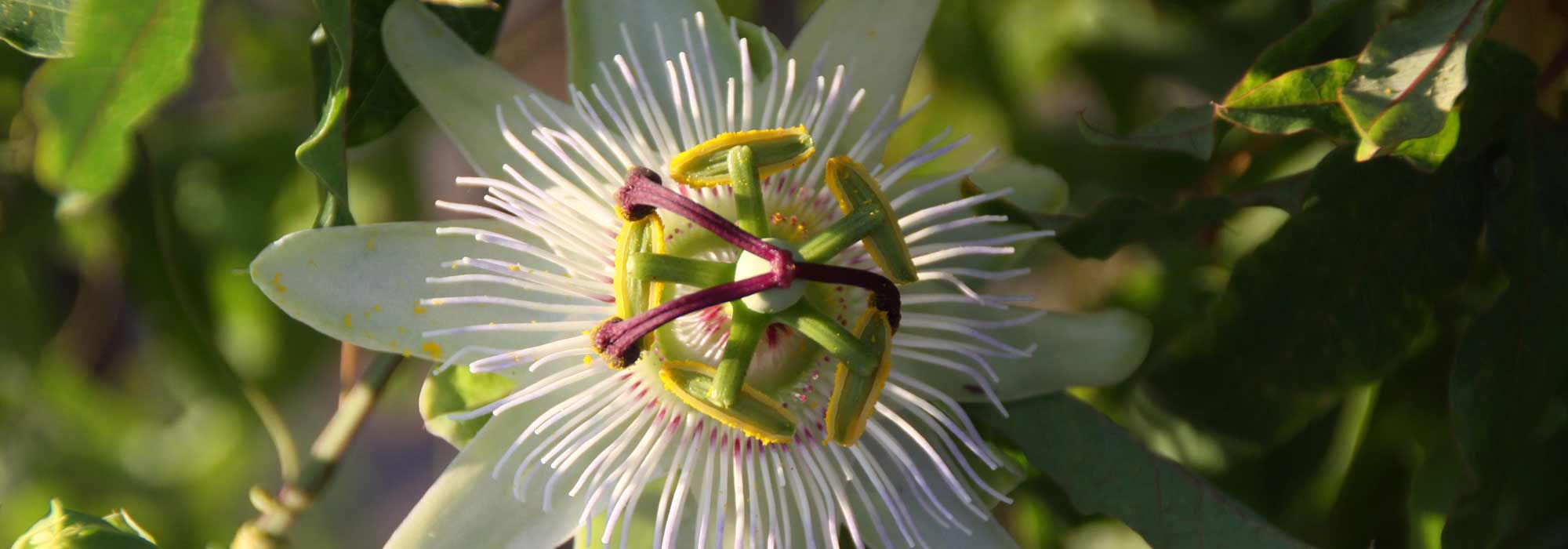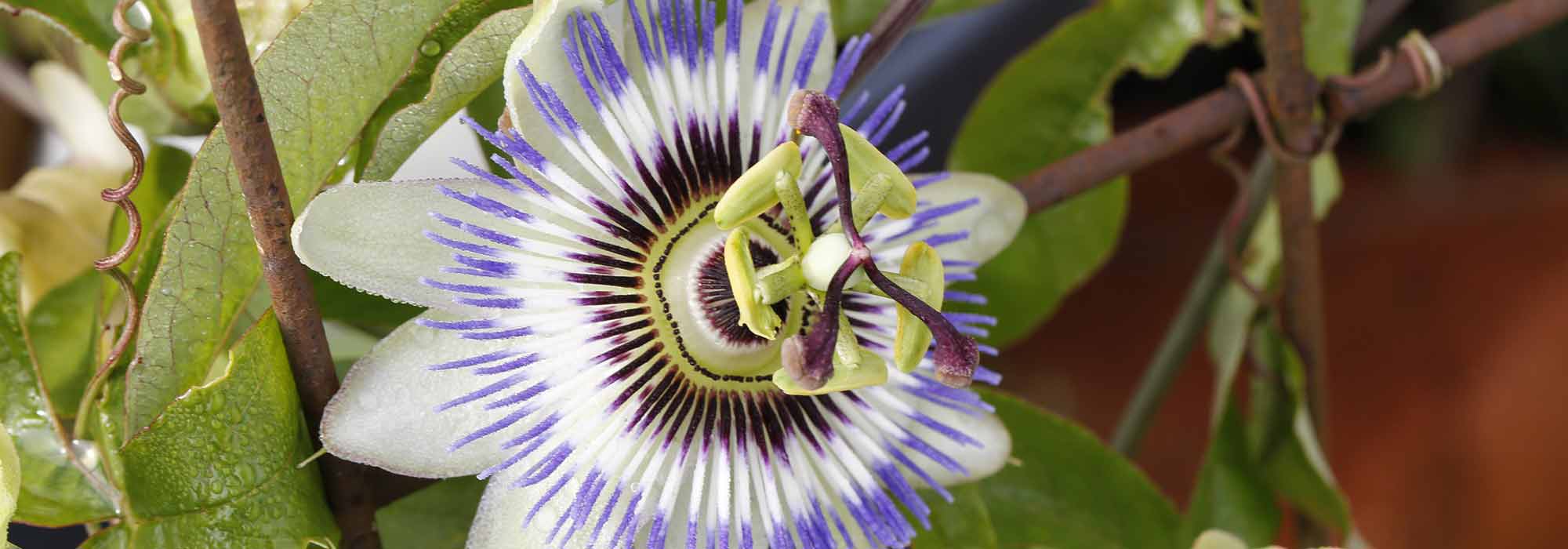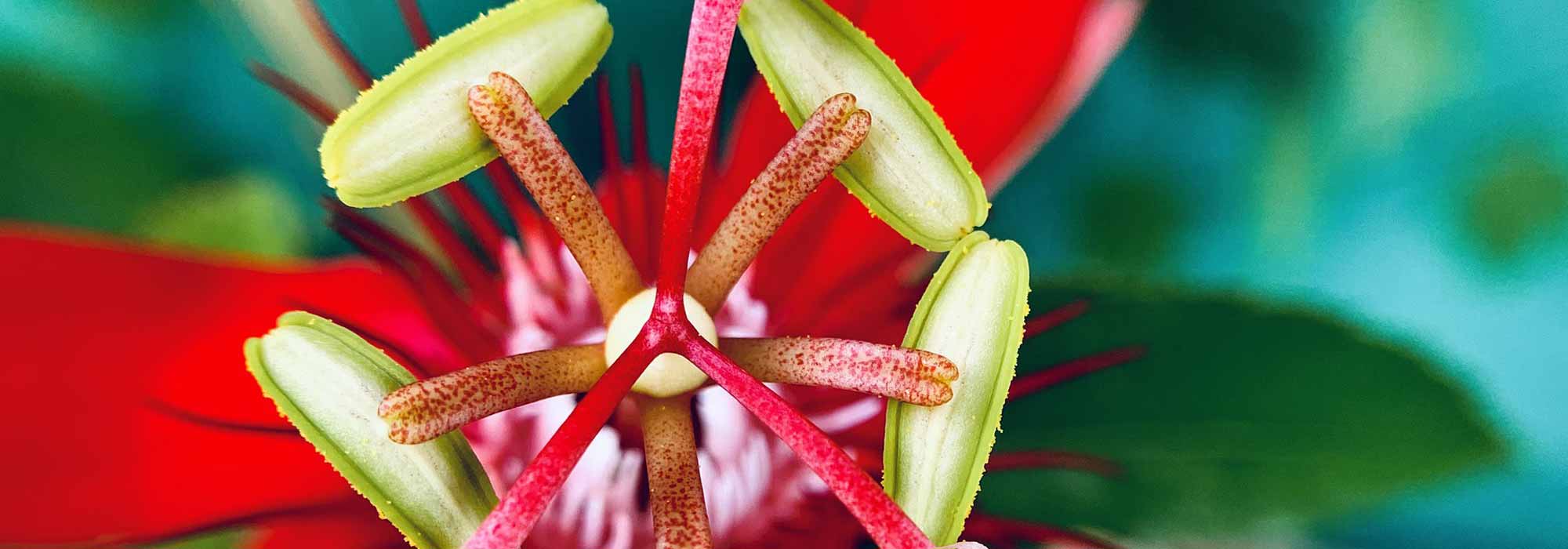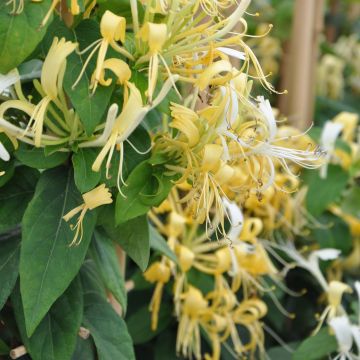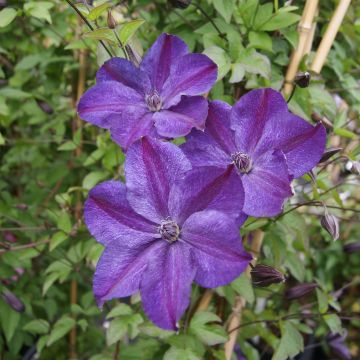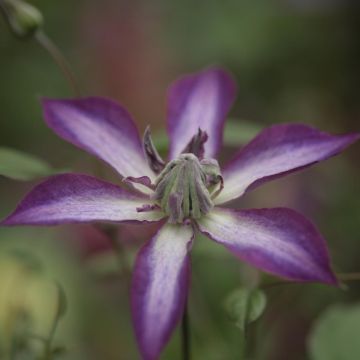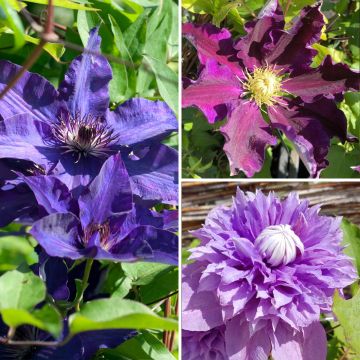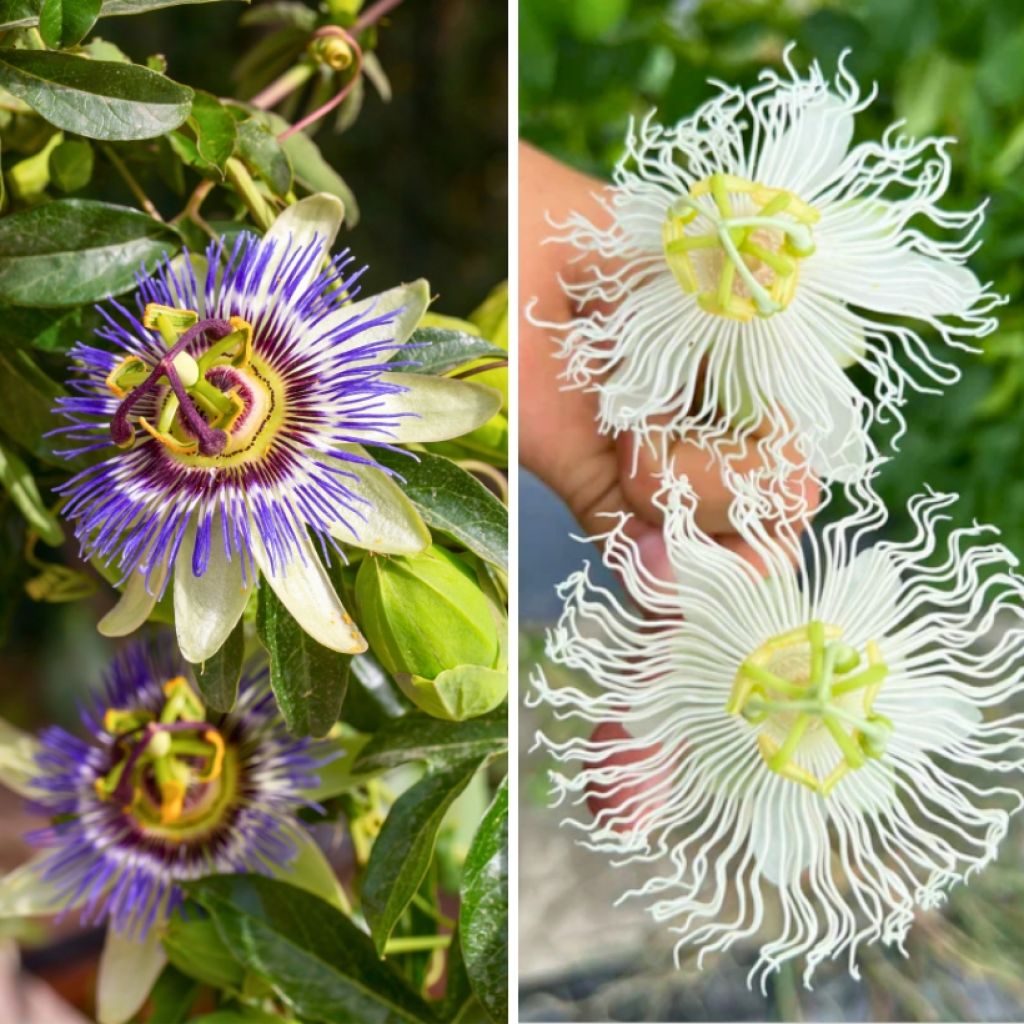

Duo of Passiflora
Duo of Passiflora
Passiflora caerulea, (x) incarnata Cooltropics® 'Snowstar®'
Blue Passionflower, Bluecrown Passionflower, Common Passionflower, Purple Passionflower, Maypop
Special offer!
Receive a €20 voucher for any order over €90 (excluding delivery costs, credit notes, and plastic-free options)!
1- Add your favorite plants to your cart.
2- Once you have reached €90, confirm your order (you can even choose the delivery date!).
3- As soon as your order is shipped, you will receive an email containing your voucher code, valid for 3 months (90 days).
Your voucher is unique and can only be used once, for any order with a minimum value of €20, excluding delivery costs.
Can be combined with other current offers, non-divisible and non-refundable.
Home or relay delivery (depending on size and destination)
Schedule delivery date,
and select date in basket
This plant carries a 6 months recovery warranty
More information
We guarantee the quality of our plants for a full growing cycle, and will replace at our expense any plant that fails to recover under normal climatic and planting conditions.
Would this plant suit my garden?
Set up your Plantfit profile →
Collection items (2 plants)
Description
A pair of hardy passionflowers, with a crown capable of withstanding -12 °C. It brings together the vigorous species Passiflora caerulea with blue flowers and the hybrid variety incarnata 'Snow Star' with white flowers that produce edible fruits. These two climbers bloom from June to October, their large, exotic flowers exude a sweet fruity fragrance. They are loved by pollinating insects. These two passionflowers will enhance a wire fence, a pergola or an arbour. They like hot summers and thrive in well-drained soil, not too dry in summer and not too wet in winter. Can be grown in pots or in the ground.
This pair is composed of:
1 x Passiflora caerulea: a vigorous South American species called blue passionflower. It is capable of reaching over 7 m long in mild climates and its stems turn woody with age. It blooms continuously from June to October. Its 6 to 8 cm flowers are composed of 5 bluish-white petals topped with a double crown of tricoloured filaments, bluish-violet on the periphery, white in the centre, and purple at the base. Its ovoid and soft fruits are orange when ripe but are not very tasty. This passionflower is impractical in the Mediterranean and will appeal to more northern gardeners who can appreciate its exotic charm without being overwhelmed by its exuberance. Resistant to summer drought in the ground.
1 x Passiflora incarnata 'Snowstar': a herbaceous hybrid variety, behaving like a perennial, reaching a height of 3 to 4 m. It produces white flowers in July-August with a diameter of 8-9 cm adorned with long filaments, and then edible fruits the size and colour of an egg, yellow when ripe, in September-October. Their flesh is comparable to that of the passion fruits found in our markets.
These two passionflowers have a crown hardy down to -10/-12 °C, after 2 or 3 years of cultivation. It is very important to protect their crown from cold and humidity during the first two winters. They are sun and heat-loving plants so should be planted sheltered from cold and drying winds. Plant them in deep, well-worked and well-drained, rich soil, rather moist in summer, not too wet in winter. They can be planted in the ground in the south, elsewhere, give them in a protected location, with good winter mulching. Respect a spacing of 1.50 m between two plants. Place them on a support to support the weight of their vegetation and secure the branches well onto the support. Pruning before winter is recommended to maintain reasonable dimensions. You can prune the main branches to facilitate growth. At the beginning of spring, remove dead stems near the crown. In a greenhouse or conservatory, beware of scale insects and whiteflies, as well as cucumber mosaic virus. Treat preventively.
This pair of hardy passionflowers will work well to dress up walls, fences, wire mesh, porches, and trellises, preferably by associating them with an evergreen vine that will provide permanent decoration in winter (Clematis cirrhosa, Hardenbergia violacea, Variegated Ivy). They can also be planted against a persistent or deciduous hedge, to which they will bring originality in summer. The passionflower is also highly appreciated in conservatories where it will live through very cold winters without damage.
Plant habit
Flowering
Foliage
Botanical data
Passiflora
caerulea, (x) incarnata
Cooltropics® 'Snowstar®'
Passifloraceae
Blue Passionflower, Bluecrown Passionflower, Common Passionflower, Purple Passionflower, Maypop
Cultivar or hybrid
Other Passionflowers
View all →Planting and care
Passiflora caerulea and the 'Snow Star' hybrid are the most resistant of the genus, they have the immense advantage of withstanding frost to -12°C once they are mature and well established. They can therefore remain in the ground, in a sheltered position in northern regions, along a south-facing wall for example. Mulch the crowns well before the first frosts. In case of severe frost, prune the passionflower to the base in early spring. Otherwise, prune it severely, as the flowers appear on the current year's shoots. It is fast-growing and can grow up to 4m per year. Apart from its dislike of extreme cold, it is sturdy and easily adapts to sunny situations. Plant your passionflowers in well-drained, deep and loose soil, rich in compost and not too dry in summer.
In mild climates, passiflora caerulea is extremely vigorous and can become invasive, especially through self-seeding. Its tolerance to summer drought is excellent.
Planting period
Intended location
Care
Planting & care advice
This item has not been reviewed yet - be the first to leave a review about it.
Similar products
Haven't found what you were looking for?
Hardiness is the lowest winter temperature a plant can endure without suffering serious damage or even dying. However, hardiness is affected by location (a sheltered area, such as a patio), protection (winter cover) and soil type (hardiness is improved by well-drained soil).

Photo Sharing Terms & Conditions
In order to encourage gardeners to interact and share their experiences, Promesse de fleurs offers various media enabling content to be uploaded onto its Site - in particular via the ‘Photo sharing’ module.
The User agrees to refrain from:
- Posting any content that is illegal, prejudicial, insulting, racist, inciteful to hatred, revisionist, contrary to public decency, that infringes on privacy or on the privacy rights of third parties, in particular the publicity rights of persons and goods, intellectual property rights, or the right to privacy.
- Submitting content on behalf of a third party;
- Impersonate the identity of a third party and/or publish any personal information about a third party;
In general, the User undertakes to refrain from any unethical behaviour.
All Content (in particular text, comments, files, images, photos, videos, creative works, etc.), which may be subject to property or intellectual property rights, image or other private rights, shall remain the property of the User, subject to the limited rights granted by the terms of the licence granted by Promesse de fleurs as stated below. Users are at liberty to publish or not to publish such Content on the Site, notably via the ‘Photo Sharing’ facility, and accept that this Content shall be made public and freely accessible, notably on the Internet.
Users further acknowledge, undertake to have ,and guarantee that they hold all necessary rights and permissions to publish such material on the Site, in particular with regard to the legislation in force pertaining to any privacy, property, intellectual property, image, or contractual rights, or rights of any other nature. By publishing such Content on the Site, Users acknowledge accepting full liability as publishers of the Content within the meaning of the law, and grant Promesse de fleurs, free of charge, an inclusive, worldwide licence for the said Content for the entire duration of its publication, including all reproduction, representation, up/downloading, displaying, performing, transmission, and storage rights.
Users also grant permission for their name to be linked to the Content and accept that this link may not always be made available.
By engaging in posting material, Users consent to their Content becoming automatically accessible on the Internet, in particular on other sites and/or blogs and/or web pages of the Promesse de fleurs site, including in particular social pages and the Promesse de fleurs catalogue.
Users may secure the removal of entrusted content free of charge by issuing a simple request via our contact form.
The flowering period indicated on our website applies to countries and regions located in USDA zone 8 (France, the United Kingdom, Ireland, the Netherlands, etc.)
It will vary according to where you live:
- In zones 9 to 10 (Italy, Spain, Greece, etc.), flowering will occur about 2 to 4 weeks earlier.
- In zones 6 to 7 (Germany, Poland, Slovenia, and lower mountainous regions), flowering will be delayed by 2 to 3 weeks.
- In zone 5 (Central Europe, Scandinavia), blooming will be delayed by 3 to 5 weeks.
In temperate climates, pruning of spring-flowering shrubs (forsythia, spireas, etc.) should be done just after flowering.
Pruning of summer-flowering shrubs (Indian Lilac, Perovskia, etc.) can be done in winter or spring.
In cold regions as well as with frost-sensitive plants, avoid pruning too early when severe frosts may still occur.
The planting period indicated on our website applies to countries and regions located in USDA zone 8 (France, United Kingdom, Ireland, Netherlands).
It will vary according to where you live:
- In Mediterranean zones (Marseille, Madrid, Milan, etc.), autumn and winter are the best planting periods.
- In continental zones (Strasbourg, Munich, Vienna, etc.), delay planting by 2 to 3 weeks in spring and bring it forward by 2 to 4 weeks in autumn.
- In mountainous regions (the Alps, Pyrenees, Carpathians, etc.), it is best to plant in late spring (May-June) or late summer (August-September).
The harvesting period indicated on our website applies to countries and regions in USDA zone 8 (France, England, Ireland, the Netherlands).
In colder areas (Scandinavia, Poland, Austria...) fruit and vegetable harvests are likely to be delayed by 3-4 weeks.
In warmer areas (Italy, Spain, Greece, etc.), harvesting will probably take place earlier, depending on weather conditions.
The sowing periods indicated on our website apply to countries and regions within USDA Zone 8 (France, UK, Ireland, Netherlands).
In colder areas (Scandinavia, Poland, Austria...), delay any outdoor sowing by 3-4 weeks, or sow under glass.
In warmer climes (Italy, Spain, Greece, etc.), bring outdoor sowing forward by a few weeks.






























